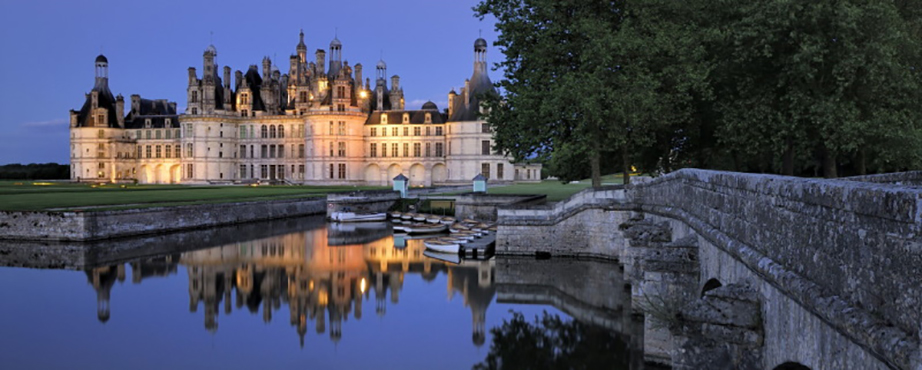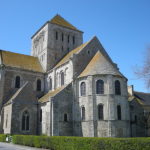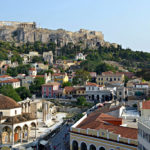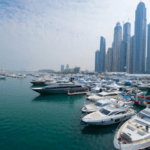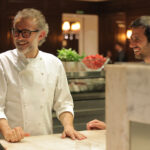France never fails to lure one to her side, scenic wonders. But, the jewel on her crown is her legacy. The reminiscent of the ancient throne still walks her palaces, ever the proud and majestic. Transport to the age of Renaissance, as we take you through the most beautiful architectural wonders France cradles in her lap.
While the rebirth of a new era set roots in Italy, the world was yet to know that its echoes perhaps would resonate wildly in the heart of France, almost a century later. When the Renaissance period went down in history as the harbinger of modernity, it threw France into a period of Revivalism. The 14th century witnessed the early seeds of Renaissance while the later centuries saw the roots growing deep into French soil; a period which broke away with traditions and looked longingly into the glories of the ancient past.
The early seeds of Renaissance architecture bloomed under Francis I who followed a Policy of Conquer, over the art of Italy and the next 3 decades saw the arrival of Italian stylistic trends into the French architectural scene, along with famed Italian artists like Leonardo Da Vinci, Benvenuto Cellini, and Rosso Fiorentino. It is no surprise that France’s most majestic monuments belong to this period, of creative and intellectual ferment.
Chateau de Azay-le-Rideau
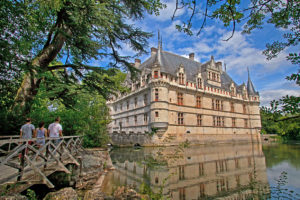
This early reminiscent of French Renaissance Architecture showcases itself in the Chateau de Azay-le-Rideau, residing in the abode of monumental beauty in France. The Loire Valley has birthed the great Chateaus, featuring diverse architectural panaches from different epochs. Strategically positioned on a secluded island on the Indre River, this Chateau emanates poise and grandeur. It is an early attempt to incorporate Renaissance elements into Gothic structure. Despite the efforts, the Chateau remained incomplete due to the political undercurrents of the time. This is quite evident from the ‘L’ shaped building, a result of the confiscation of the Chateau before completion; a mark that makes it unique.
Chateau de Fontainebleau
 Under the artistic grandeur of Gilles le Breton, this medieval palace was remodelled by the stylistics of Renaissance architecture during the 14th century. Set in the midst of wild nature, Chateau de Fontainebleau defies tradition with its unique blend of Medieval and Renaissance architecture. The Gothic structure was, merged with revivalist elements showcasing the Cour Ovale, or Oval Courtyard and the colossal Renaissance stairway, the Portique de Serlio. The Gallery which leads to chapel of the Trinitaires, is famed for the paintings of Francesco Primaticcio and Rosso Fiorentino. Inspired by, Ovid and Pliny the Classical Renaissance Garden was erected around the Chateau to give it the ambience of a secluded haven.
Under the artistic grandeur of Gilles le Breton, this medieval palace was remodelled by the stylistics of Renaissance architecture during the 14th century. Set in the midst of wild nature, Chateau de Fontainebleau defies tradition with its unique blend of Medieval and Renaissance architecture. The Gothic structure was, merged with revivalist elements showcasing the Cour Ovale, or Oval Courtyard and the colossal Renaissance stairway, the Portique de Serlio. The Gallery which leads to chapel of the Trinitaires, is famed for the paintings of Francesco Primaticcio and Rosso Fiorentino. Inspired by, Ovid and Pliny the Classical Renaissance Garden was erected around the Chateau to give it the ambience of a secluded haven.
The Louvre Palace
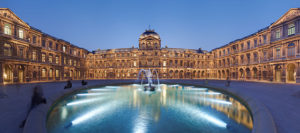 In the gifted hands of Pierre Lescot and sculptor Jean Goujon the Palace of Louvre was remodelled, in Classical Renaissance style. The Medieval foundations of the Palace are to this day visible in the lower grounds. This architectural style created a new form of French Classicism, with its departure from beamed to sculpted caryatides. The Old Louvre Palace was demolished and a New Louvre was modelled adherent to the Renaissance art. Petite Gallery was also a charming addition to the Palace which augmented the beauty of the art. In the subsequent eras the Palace was subjected to different trends, but to this day she stands proud with her head held high, proving time and again her valour to withstand change.
In the gifted hands of Pierre Lescot and sculptor Jean Goujon the Palace of Louvre was remodelled, in Classical Renaissance style. The Medieval foundations of the Palace are to this day visible in the lower grounds. This architectural style created a new form of French Classicism, with its departure from beamed to sculpted caryatides. The Old Louvre Palace was demolished and a New Louvre was modelled adherent to the Renaissance art. Petite Gallery was also a charming addition to the Palace which augmented the beauty of the art. In the subsequent eras the Palace was subjected to different trends, but to this day she stands proud with her head held high, proving time and again her valour to withstand change.
Chateau de Chambord
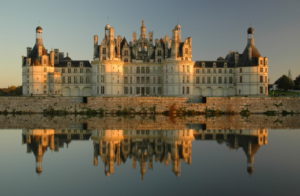 Crooning in the serenity of Loire Valley, Chambord was intended as Hunting Lodge for Francis 1. The hands which designed this monument remain a matter of debate, but names like Domenico da Cortana and Leonardo Da Vinci has been dominating the list. Even though left incomplete, it is by far the largest Chateau in Loire. Departing from corridor styled accommodations, Chambord featured rooms into separate suites and immense bastion towers at its four corners. The repetition of the Renaissance Gardens and steeped roofs are explicit of Renaissance Architectural beauty.
Crooning in the serenity of Loire Valley, Chambord was intended as Hunting Lodge for Francis 1. The hands which designed this monument remain a matter of debate, but names like Domenico da Cortana and Leonardo Da Vinci has been dominating the list. Even though left incomplete, it is by far the largest Chateau in Loire. Departing from corridor styled accommodations, Chambord featured rooms into separate suites and immense bastion towers at its four corners. The repetition of the Renaissance Gardens and steeped roofs are explicit of Renaissance Architectural beauty.
The Amboise Castle
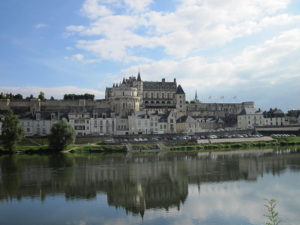 A desired residential house for French royalty, the Amboise Castle is famed for its elevated location, on the banks of River Loire; overlooking the village of Amboise. The Palace was explicitly remodeled by the Italian motifs, extensive gardens, double spiral stairways and conical roofs. It witnessed the historical event marked down as the Amboise Conspiracy. The St Hubert Chapel within the palace ground is, believed to be the resting place of Leonardo Da Vinci. Even though the castle never recovered its former glory after the Conspiracy, it survived the torment of the ages and stands high as the proud seat of the majestic.
A desired residential house for French royalty, the Amboise Castle is famed for its elevated location, on the banks of River Loire; overlooking the village of Amboise. The Palace was explicitly remodeled by the Italian motifs, extensive gardens, double spiral stairways and conical roofs. It witnessed the historical event marked down as the Amboise Conspiracy. The St Hubert Chapel within the palace ground is, believed to be the resting place of Leonardo Da Vinci. Even though the castle never recovered its former glory after the Conspiracy, it survived the torment of the ages and stands high as the proud seat of the majestic.
Chateau du Clos Luce
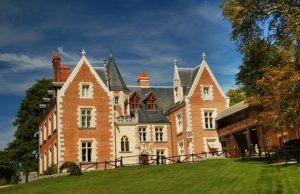 Located adjacent to the Castle of Amboise, this monumental structure is famed for being the last abode for Leonardo Da Vinci, whose association with King Francis was no secret. Simple, yet no less in dignity and magnificence, Chateau du Clos Luce is known for its elegant poise just like the man himself. Allied to the Amboise Castle through an underground passageway; the Palace now exists as an accolade to great man. Open to public as Leonardo Da Vinci Museum, it features the copies of his prestigious paintings and models of his machines.
Located adjacent to the Castle of Amboise, this monumental structure is famed for being the last abode for Leonardo Da Vinci, whose association with King Francis was no secret. Simple, yet no less in dignity and magnificence, Chateau du Clos Luce is known for its elegant poise just like the man himself. Allied to the Amboise Castle through an underground passageway; the Palace now exists as an accolade to great man. Open to public as Leonardo Da Vinci Museum, it features the copies of his prestigious paintings and models of his machines.

